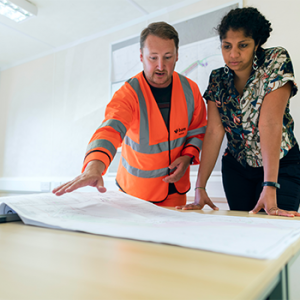How To Start Incorporating Sustainability in Your Construction Business
Environmental impact is a concern for all industries. The overuse of resources and mishandling of waste by businesses across the planet puts significant pressure on our ecosystem. While the construction sector is an essential field, it is among those doing concerning levels of damage. A recent World Economic Forum report revealed that global construction produces 38% of global greenhouse emissions.
As such, there is an urgent need for construction businesses to be more sustainable. This isn’t just about the big corporations, either. Even small construction companies creating houses in the community have a role to play. Nevertheless, the idea of shifting the processes your company may have had in place for years can be daunting.
So, let’s take a closer look at how you can start incorporating sustainability into your construction business.
Identify Improvement Areas
Just adopting a general range of sustainability practices isn’t usually the most effective route. The construction industry has a unique range of environmental challenges to address. Not to mention that the way your company operates can mean it has elements that are different from those of your competitors. As such, the most relevant way you can start incorporating sustainability into your business is by taking the time to first identify your key areas for improvement.
Perform a full sustainability audit in all areas of your business. If you’re storing materials and equipment, take the time to examine which areas of your warehouse can be made more environmentally friendly. This could include determining the potential for upgrades to energy-efficient lighting machinery. You might also review where you can utilize greener materials in your packing and packaging. These considerations might seem small, but they can make for a more thorough and actionable start to your efforts.
One of the most important actions you can perform during this audit is to involve a diverse range of staff. Certainly, the heads of each construction department should take the lead in their area of expertise. But it’s also important to include ground-level workers in the process. They have an intimate knowledge of day-to-day activities and where improvements can be made. These varied perspectives can help you to achieve a fuller view of how to move forward.
Educate Staff and Contractors
Making a construction business sustainable is not just about upgrading equipment or changing your core materials, though these are important. Often, the biggest impact you can make in both the short and long term is through the behavior of those you employ. After all, they’re the ones who will be making the daily difference in your primary operations as well as influencing your overall reputation in the industry.
As such, it’s vital to commit to educating your workers. This should be on a range of general sustainability measures, such as responsible waste disposal and minimizing unnecessary use of electrical equipment. But it should also be specific to their roles. Drivers and construction vehicle operators should receive training on how to plan the most fuel and emissions-efficient routes to work sites. Office-based staff — like project managers and administrators — need to be trained in such aspects as paperless operations and identifying sustainable building materials.
Remember, too, that the sustainability of your construction business isn’t limited to the activities of your direct staff. The contractors you hire will also have an impact on the environmental friendliness of your operations. You can’t force external contractors to take such courses. However, it’s worth inviting them to take part in your company’s relevant sessions, or potentially subsidizing external sustainability training for them. If nothing else, this can help you identify which contractors are committed to sustainability, which could influence your hiring choices moving forward.

Plan for the Long Term
Incorporating sustainability doesn’t necessarily involve making all your changes in one go. This can get out of hand quickly and adds significant financial and logistical pressure to your business. Yes, there’s a certain amount of urgency to take action and avoid the irreversible effects of climate change. However, even making small, gradual improvements can be more practical while contributing to the overall positive impact. So, don’t be afraid to plan for the long-term.
You can’t just vaguely commit to making occasional adjustments here and there, though. Formally implementing a long-term sustainability plan is effective on a few levels. Firstly, it provides a practical guide to milestone improvements along the timeline in a way that serves your financial and environmental priorities. It also gives you some agility to adjust as those priorities change. You may also find this visible official document keeps you accountable for your commitment to change.
Indeed, it’s an intelligent move to incorporate your long-term sustainability plan into your approach to business growth. Your ability to manage your growth is dependent on how you handle changing demand and costs. Just like other areas of your enterprise, you don’t want the costs of sustainability to outpace the demand for sustainable projects. So, start with setting clear specific, measurable, achievable, realistic, and time-bound (SMART) goals for both your company’s trajectory and your green practices. Gain visibility on key metrics relating to consumer demand and your financial flow. You can then build an actionable growth plan that ensures your company, and your sustainability develops in tandem and in a manageable way.
Conclusion
The construction industry is one of the primary producers of negative environmental impact. As such, each business needs to take responsibility for meaningful change. This doesn’t have to happen all at once, though. Start incorporating sustainability by gaining clarity on key areas of concern and providing education on green practices to staff. By planning your measures over the long term, you may also find the process more manageable.
Interested in receiving more great construction news, research and content from NCCER? Click here to join our mailing list!

